Over the years, numerous studies have been conducted to determine how long museum-goers spend looking at art. Results vary, but most land somewhere between 10 to 30 seconds. It seems like an absurdly short amount of time, but I know it to be true based on personal experience. Whenever I visit a museum, the urge to “see everything!” by dashing through successive rooms with increasing haste is tempting, and that’s before we even consider other distractions like phone notifications and absently taking photos of everything.
One way I counter this tendency to rush is by sketching. I’ve long had a habit of bringing a sketchbook with me when I’m out and about to record whatever I might encounter. Though there are many benefits to this practice, the most valuable is that sketching is an act of seeing more closely. In choosing to sketch something, you pay attention to details you otherwise may have missed. It forces you to slow down and observe more intently, and engage with your surroundings in a new way.
Museum Sketching for Reference and Study
Museums are basically my favourite haunts of all time. Whenever I find myself in a new city, I head straight for the local museum, be it art, natural history, or something more obscure. It is a wonderful way to learn about a new place. Sketching allows me the time to sit in front of a piece of art for longer than I probably would otherwise; longer than 30 seconds! Enough time to truly contemplate the piece, and for small details to emerge.
When sketching in a museum, my goal is to visually note down things that catch my eye; from intriguing objects to elements within a painting that I particularly appreciate. I am not aiming for accuracy in these rough sketches, but they end up functioning as mini master studies. By the end of the day, I will have accumulated a sketched summary of my visit, and all the things I’d seen.
Urban Sketching as a Record of Time and Place
Not just confined to museums, my sketchbook also documents all the places I’ve been. Even a cafe or morning commute can provide abundant inspiration; it can be a fun way to people-watch, capturing quick gestures of interesting outfits or situations. Much like how sketching allows you to observe a painting more intently, it also encourages you to be more aware of your surroundings. This way of working aligns closely with Urban Sketching, which is a global movement where people meet up regularly to sketch on location. Here are some of the stated goals of the movement, which perfectly summarises what I love about sketching:
- We draw on location, indoors or out, capturing what we see from direct observation.
- Our drawings tell the story of our surroundings, the places we live, and where we travel.
- Our drawings are a record of time and place.
I like to think that sketching captures the essence and memory of a place. I can look at an old sketch and remember the day or place I made it much more vividly. For this reason I always have a sketchbook ready when I travel, and they have become some of my most treasured souvenirs.
Experimenting with Materials
A welcome secondary benefit of sketching is the opportunity to explore new materials and methods. Since it is separate from my illustration work, I am not thinking about narrative image-making, nor analysing whether a piece fits into my body of work. So the stakes are lower, and it is a space in which to experiment and play.
I try to keep my sketching materials minimal for portability. The core elements include: a Faber Castell Pitt pen, a water brush, Tombow brush pens, a white charcoal pencil, and a selection of watercolours in a mint tin. I occasionally add to this with fountain pens or water brushes filled with various coloured inks, gouache, and colour pencils. Though a limited set of tools, the different effects that can be achieved with them are infinite.
Sketching is Seeing
While not directly related to my illustration work, I think of sketching on location as a key part of my creative process. Observations first scribbled in a sketchbook often find their way into my illustrations. It is also a useful tool for learning, and recording things seen and done. But by far the most compelling reason to sketch is the opportunity it provides for us to slow down, and perceive the world around us in a different light.
I leave you with a pertinent quote from 19th century art critic John Ruskin, who evocatively describes the concept that sketching is seeing:
‘Let two persons go out for a walk; the one a good sketcher, the other having no taste of the kind. Let them go down a green lane. There will be a great difference in the scene as perceived by the two individuals. The one will see a lane and trees; he will perceive the trees to be green, though he will think nothing about it; he will see that the sun shines, and that it has a cheerful effect; and that’s all! But what will the sketcher see? His eye is accustomed to search into the cause of beauty, and penetrate the minutest parts of loveliness. He looks up, and observes how the showery and subdivided sunshine comes sprinkled down among the gleaming leaves overhead, till the air is filled with the emerald light. He will see here and there a bough emerging from the veil of leaves, he will see the jewel brightness of the emerald moss and the variegated and fantastic lichens, white and blue, purple and red, all mellowed and mingled into a single garment of beauty. Then come the cavernous trunks and the twisted roots that grasp with their snake-like coils at the steep bank, whose turfy slope is inlaid with flowers of a thousand dyes. Is not this worth seeing? Yet if you are not a sketcher you will pass along the green lane, and when you come home again, have nothing to say or to think about it, but that you went down such and such a lane.’


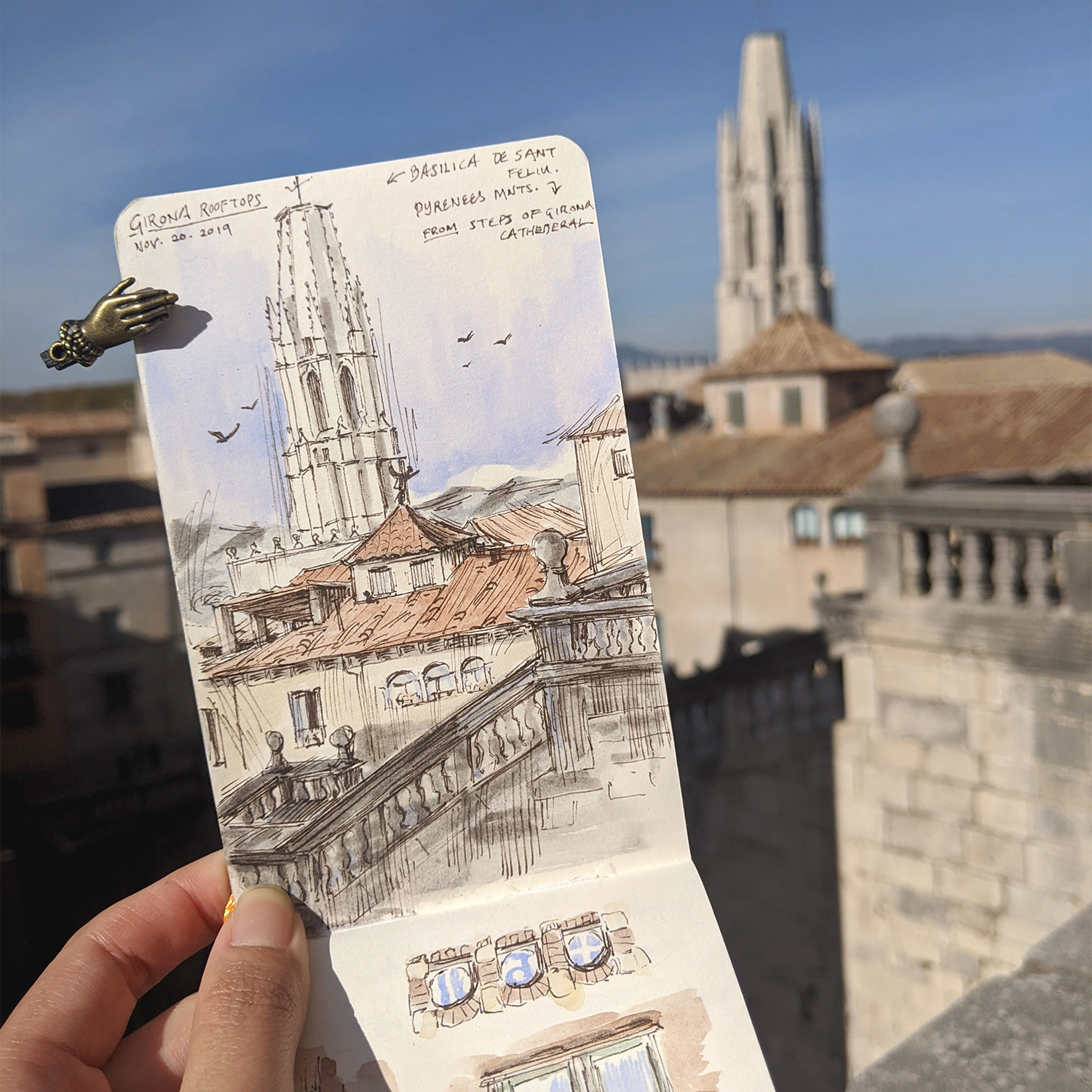
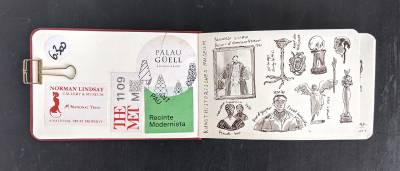

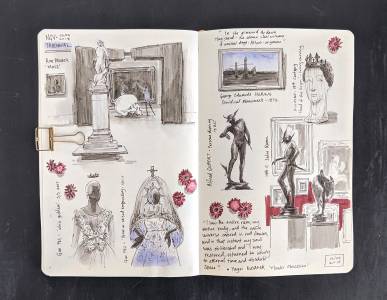
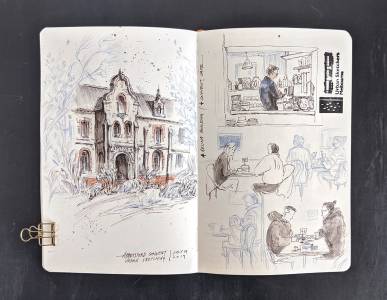

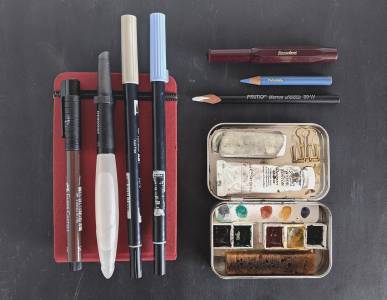
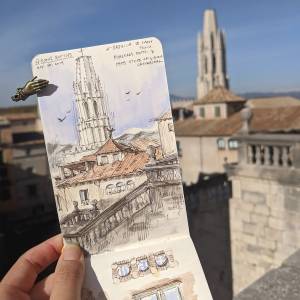
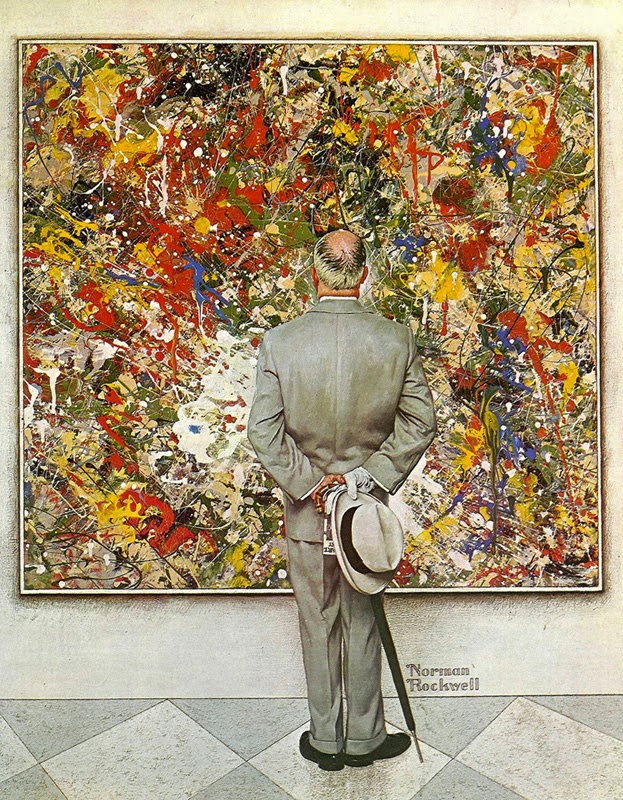


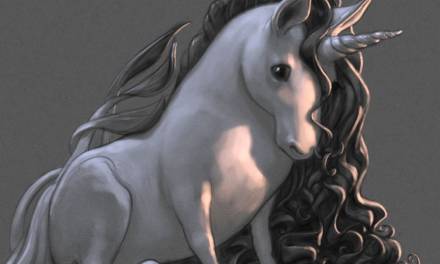

I rush trough museums because I feel like the personnel start getting suspicious if I stand too long looking at a painting. One time a staff member followed me from room to room around the exhibition.
Sketching could be a solution, though!
I really enjoy how much of a movement Urban Sketching has become. The act of getting out and drawing from life is so important and something that changed my art for the better in so many ways, and really, changed my life quite a bit. One thing me and my fiancé enjoy doing is walking a woodland trail with our sketchbooks. We’ll come to a spot and then it’s all about sketching, move on, find a new spot, sketch sketch sketch. It makes the walk take about 4 times as long, but you come away with much more to talk about not to mention, art to show! We’re hoping to get a larger group to go out with us next summer.
I really loved this article, totally hit a button with me and now I just want to go draw something, though, I should actually get back to work. 😉 Thanks for writing this.
Good point. About this, I suggest to take a look at “Zen of Seeing: Seeing/Drawing as Meditation” by Frederick Franck. (and all of his other books on Drawing as a means to open eyes differently and learning to see)
Good point